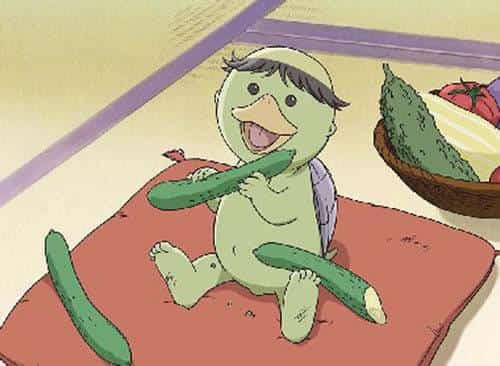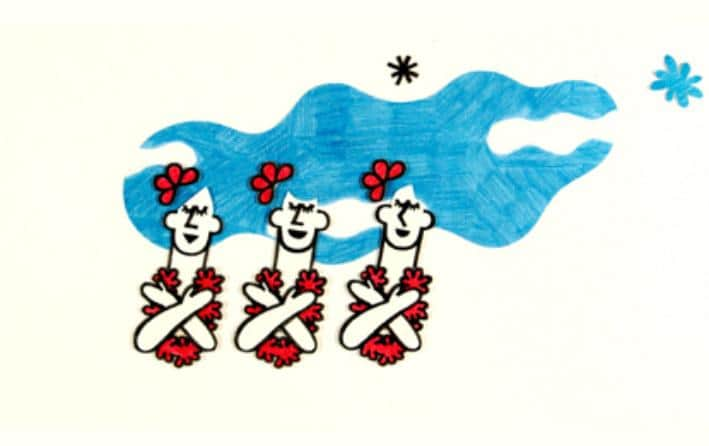"How to Keep a Kappa" review: What is the appeal of this anime that depicts coexistence with unique creatures?

How to Keep a Kappa - A Showa-era Life Filled with Relaxation and HumorSet in a city in the 1960s, How to Keep a Kappa begins with the protagonist, a single-person living alone, welcoming a baby kappa named "Katan" into his home. This is a 26-episode short anime series that aired on Animax from October 4, 2004 to April 4, 2005. It is based on a manga by Yugo Ishikawa that was serialized in Shueisha's Weekly Young Jump magazine, animated by Picture Magic and produced by NAS. It was directed by Nagisa Miyazaki, with character designs by Yuko Kusumoto, and music by Masaki Tsurugi. storyThe protagonist, "I," lives alone in a city in the 1960s and one day suddenly ends up raising a baby kappa named "Katan." Kappas have been associated with humans since ancient times, and the story unfolds as a humorous manual for raising them, with detailed descriptions of their ecology. Through his daily life with Katan, the protagonist learns how to raise kappas and what their ecology is, while also deepening his interactions with the people around him. CommentaryBased on the concept of "What if you could keep a kappa...", How to Keep a Kappa was created as a soothing anime, skillfully combining the nostalgic atmosphere of the Showa era with humor. Although it is a short 5-minute program, it carefully depicts Kattan's growth and the bond with the protagonist, providing a comfortable time for viewers. While incorporating the fantasy element of kappa, it also depicts the richness of human relationships and life through small everyday events, making it a work loved by a wide range of generations. castThe protagonist "I" is voiced by Masato Hagiwara, and Kattan is voiced by Chiro Kanzaki. Other cast members who play unique characters include Nao Yamauchi as Sakamoto, Junko Takeuchi as Tamada, Eiji Takemoto as Tadokoro, and Yoshihiro Takayama as Hercules. Their performances as voice actors further enhance the appeal of the work. Main StaffThe original work was written by Yugo Ishikawa, the director and series composition was Nagisa Miyazaki, the character design was Yuko Kusumoto, the art director was Kiyomi Ota, the color design was Yoshimi Kawakami, the cinematographer was Yoshihisa Oyama, the music was Masaki Tsurugi, the sound director was Yasunori Ebina, and the producers were Ryuji Yamazaki and Takashi Nakanishi. The animation was produced by Picture Magic, and the production was by NAS. This staff worked together to portray the Showa era atmosphere and the humorous world of kappa. subtitleThe subtitles for all 26 episodes are as follows:
Appeal of the work"How to Keep a Kappa" is a work that skillfully combines the nostalgic atmosphere of the Showa era with the fantasy element of kappa. Through the daily life of the main character and Kaatan, viewers can learn about the ecology and care of kappa. Even though it is a short 5-minute program, it carefully depicts Kaatan's growth and the bond with the main character, providing viewers with a comfortable time. In particular, the story is set in a city in the 1960s, creating a unique atmosphere of both nostalgia and freshness. Through the protagonist's life and interactions with the people around him, you can feel the warmth of Showa-era life and human relationships. Also, by incorporating the fantasy element of kappa, the small everyday events are portrayed with even more appeal. Character IntroductionThe protagonist, "I," is a young man living alone in the city. His life changes dramatically when he welcomes Katan into his life. Katan is the protagonist's pet baby kappa, a curious and adorable character. Sakamoto-san is the protagonist's friend and a woman who helps him take care of Katan. Tamada-san is the protagonist's neighbor and a kind auntie who watches over Katan as he grows up. Tadokoro-san is the protagonist's colleague and a man who gives him advice on taking care of Katan. Hercules is Katan's friend and a kappa who is knowledgeable about urban legends. Background"How to Keep a Kappa" is based on a manga by Ishikawa Yugo. In order to recreate the humor and Showa-era atmosphere of the original work in the anime, many staff members, including director Miyazaki Nagisa and character designer Kusumoto Yuko, worked together. In particular, art director Ota Kiyomi's contribution to realistically recreating the city of the 1960s was significant. Additionally, the background music by Tsurugi Masaki is also an important element in enhancing the Showa-era atmosphere. Viewers' reactions"How to Keep a Kappa" was loved by many viewers when it was first broadcast. In particular, the nostalgic atmosphere of the Showa era and the humorous depiction of kappa were well received, and it became a familiar and soothing anime. In addition, despite being a short 5-minute program, it was also praised for carefully depicting Kattan's growth and the bond with the main character. Even now, it is loved by new viewers through reruns and online distribution. Recommended points"How to Keep a Kappa" is a soothing anime that skillfully combines the nostalgic atmosphere of the Showa era with the fantasy element of kappa. Although it is a short 5-minute program, it carefully depicts Kattan's growth and her bond with the protagonist, providing viewers with a comfortable time. In particular, the setting of the story in a city in the 1960s creates a unique atmosphere that is both nostalgic and fresh. In addition, the incorporation of the fantasy element of kappa makes the small everyday events even more appealing. This work is recommended for those who want to experience the Showa era lifestyle and warm human relationships, those who like soothing anime, and those who are interested in the fantasy element of kappa. Please enjoy the daily life of Catan and the main character. |
<<: Review of "Green Country's Koeda-chan": A perfect balance of relaxation and adventure
>>: "Tonton Atta" - A traditional Niigata story made into an anime, reviews and impressions
Recommend
"Frozen 2" new TV trailer Elsa shows off her cool moves by the lake
Today (October 22), Disney released a new TV trai...
The appeal and reviews of "Momentary Lily": A moving story and the depth of its characters
Momentary Lily - Momentary Lily - Comprehensive r...
Tencent's sci-fi drama "The Three-Body Problem: The Dark Forest - Part 1" has been filed and will start filming in July
Recently, the General Office of the State Adminis...
The second season of the TV animation "Re:Zero" has new characters announced and will be aired in July
The second season of the new TV animation "M...
James Wan announces the completion of Aquaman 2 and shares a wet photo of Jason Momoa
According to foreign media heroichollywood, James...
"Annabelle 3" produced by James Wan was banned by IGN for media analysis. It scored 7.5 points on Rotten Tomatoes and 62%
"Annabelle 3: Come Home", produced by J...
MADARA - Reassessing the legendary dark fantasy
MADARA - Mouryousenki Madara overview Mōryō Senki...
The trailer of the Sino-US co-produced animation "Nezha and Transformers" has become a hot search and has attracted heated discussions
Today (December 11), the Sino-US co-produced anim...
The classic visual novel "Narcissus" will be adapted into a movie and will be produced by a Chinese company
The Chinese live-action film adaptation of the cl...
BlazBlue Alter Memory: A Must-See Review for Anime Fans
BLAZBLUE ALTER MEMORY - BlazBlue Alter Memory - C...
The appeal and reputation of "Shounen Ashibe": A deep look into the penguin friendship story
Shonen Ashibe OVA review and details ■ Public Med...
DC's "Joker" achieved gratifying results and surpassed "Venom" to become the best debut movie in October
DC's R-rated blockbuster, the Venice Golden L...
Hyogo no Ojisan - A thorough review of the touching story and character depth
Uncle from Hyogo - Hyogo no Ojisan ■ Public Media...
"Godzilla vs. Kong" releases first promotional photo of two giant beasts fighting on an aircraft carrier
When we knew that Godzilla was going to fight Kin...
One Piece suddenly stopped broadcasting for four weeks, Oda Eiichiro needs eye surgery
Eiichiro Oda, one of the industry's model wor...









